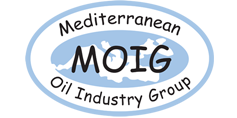
30 June 2021, the MOIG Director participated to seminar titled “Common Questions About Dispersants”; organized by Oil Spill Response Limited (OSRL); technical partner; via electronic conferencing platform. This seminar was presented by Carolyn Kee; Oil Spill Specialist from Singapore Response Department.
Carolyn Kee started by introducing the SME Dispersant Core Group composed of Hannah Goddard; Lead; Andy Nicoll; Senior Preparedness and Response Advisor, Lucy Bly; Aberdeen Manager and Ken Church; Deputy Manager Aberdeen. She then explained the oil dispersants and the behaviours highlighting that are mainly composed of a blend of surfactants in a mixture of solvents. She also listed the types of dispersants available in OSRL such as Corexit EC9500A, Corexit EC9527, Dasic Slickgone NS, Slickgone EW, Slickgone LTSW and Finasol OSR52. She spoke about natural dispersion which consists of breaking waves overcome the mechanical resistance (Viscosity of the oil) and chemical resistance (Interfacial tension). She underlined that dispersants enhance the rate of natural dispersion by reducing the interfacial tension and promoting the formation of smaller oil droplets.
Carolyn Kee talked about limitations that may affect dispersion underlining that many oils lend to absorb water to form a “Water-in-oil” emulsion, increasing the volume by 3 or 4 times; and may become extremely viscous and stable within a short period of time. On the other hand, she introduced the Special Monitoring of Applied Response Technologies (SMART) highlighting that is designed for rapid collection and reporting of real-time, scientifically based information for used within an incident command to assist decision making. She also presented the SMART Tiers explaining that Tier 1 is dedicated to visual inspection, Tier 2 to on-water monitoring for efficacy (1 meter) and Tier 3 to additional multiple depth monitoring (From 1 to 10 meters).
Carolyn Kee presented some pictures illustrating the effectiveness and ineffectiveness of dispersant applications. She explained that the dispersant efficiency is generally characterized by yellow/coffee/grey colour plume in water and oil rapidly disappearing from surface. However, the dispersant inefficiency is marked by milky appearance showing over-dosage and ineffective dispersion. She also explained that the monitoring dispersant effectiveness is ensured by the use of fluorometry analytical technique allowing to measure hydrocarbons contents in water.
Carolyn Kee emphasized the dispersant response strategy has the benefit of covering a large area and it can be applied under a broader range of weather conditions, including high winds and rough seas; unlike the mechanical recovery and in-situ burning. In addition, she noted that dispersants are less toxic than crude oil.
Carolyn Kee concluded by lessons learned from the field; highlighting that dispersants help reduce the concentration of the oil by spreading it out the water, while also increasing degradation rates of oil. She also underlined that preparedness is always the key in tackling oil spill.
